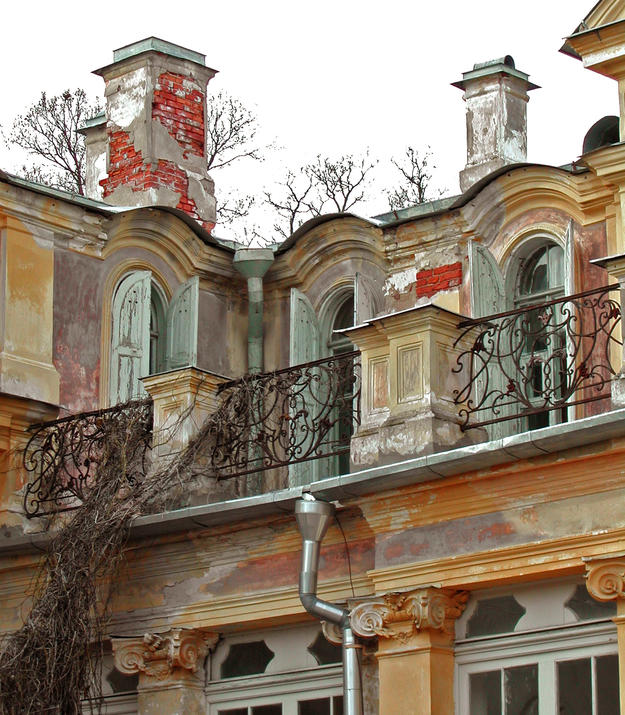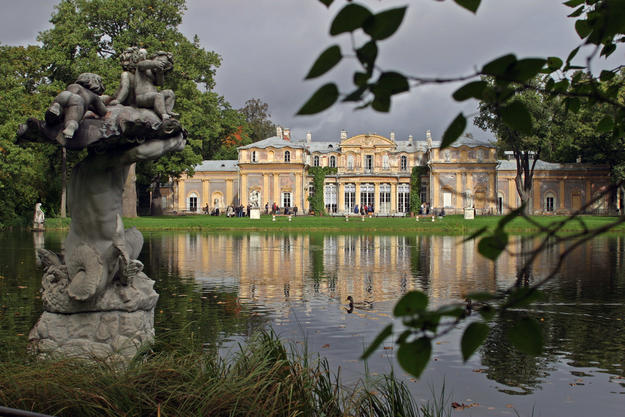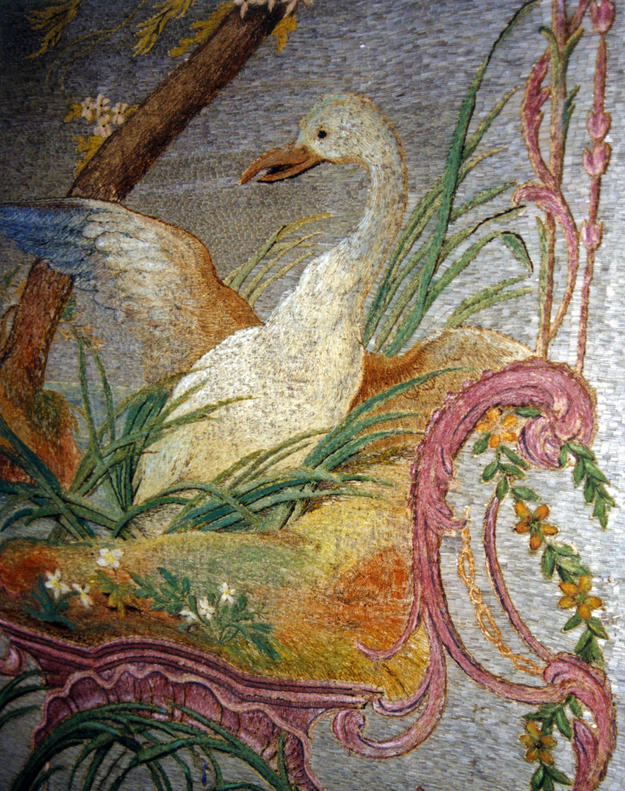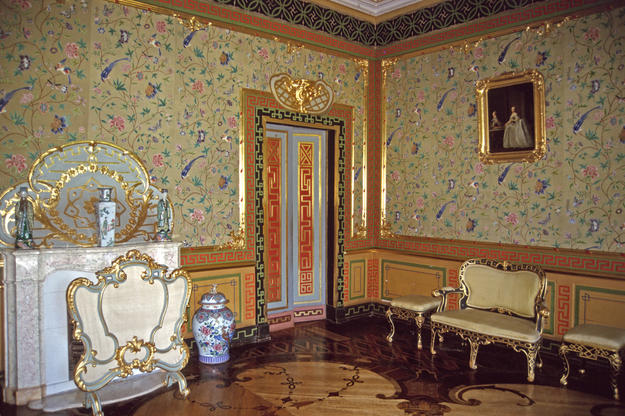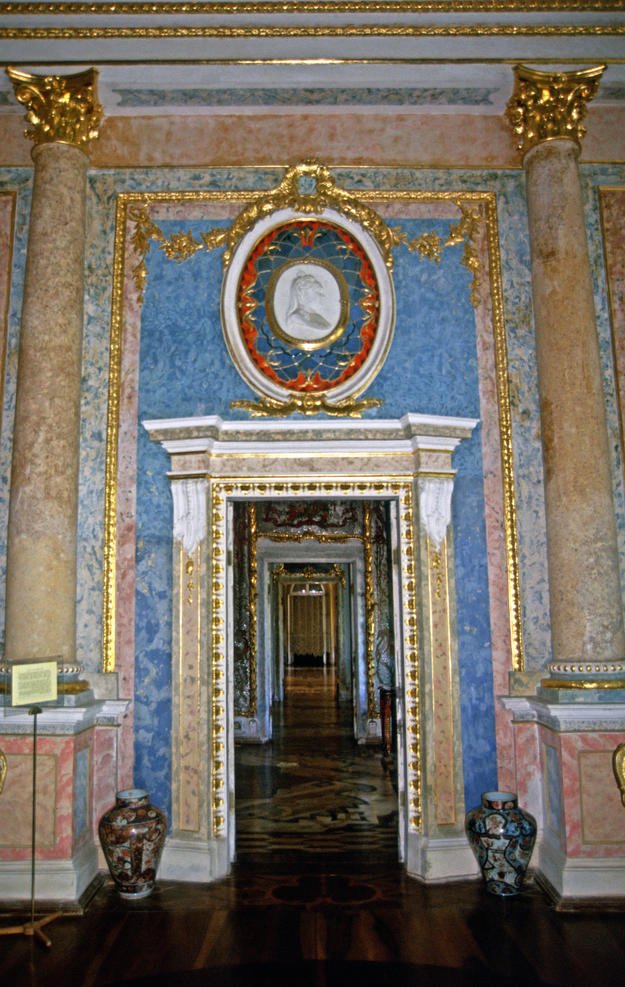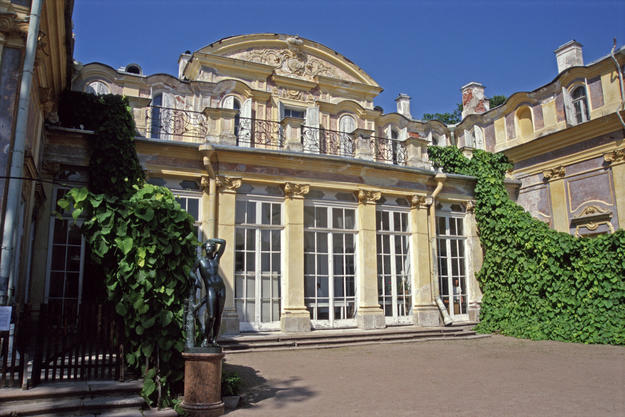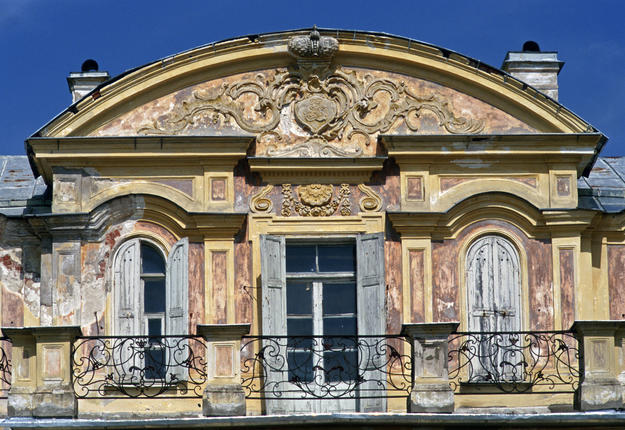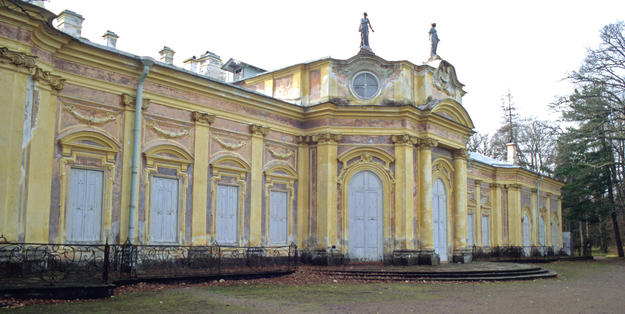The Chinese Palace at Oranienbaum was the first palace commissioned by Russian empress Catherine the Great after she seized the throne from her husband. Between 1762 and 1788 Italian architect Antonio Rinaldi made use of superior craftsmen to create this sumptuous decorated building, with its luxuriously painted and gilded chinoiserie interiors. Unique features include the Beaded Salon, whose walls are covered in “bangle work” (thousands of tiny colored glass beads) arranged in complex images of floral and animal motifs. The majority of St. Petersburg’s country palaces were destroyed during World War II, but the Chinese Palace at Oranienbaum survived with its lavish interiors intact.
A museum to Russia’s imperial past
The palace was included on the World Monuments Watch in 2000, 2002, and 2004. In 2002 and 2003, World Monuments Fund Britain worked in conjunction with Russian experts and the Oranienbaum State Museum to conduct a comprehensive survey and develop a master conservation plan. Lack of a proper water drainage system had seriously damaged the foundation of the palace as well as the interiors. Conservation work included repairing the roof and improving the water drainage system to prevent further water infiltration.
The moldings lining the interior walls and ceilings have lasted since the palace was built, as have the decorative plaster, parquet marquetry floors, carvings, and paintings on plaster and canvas. This Baroque splendor of St. Petersburg is a museum to Russia’s imperial past.

